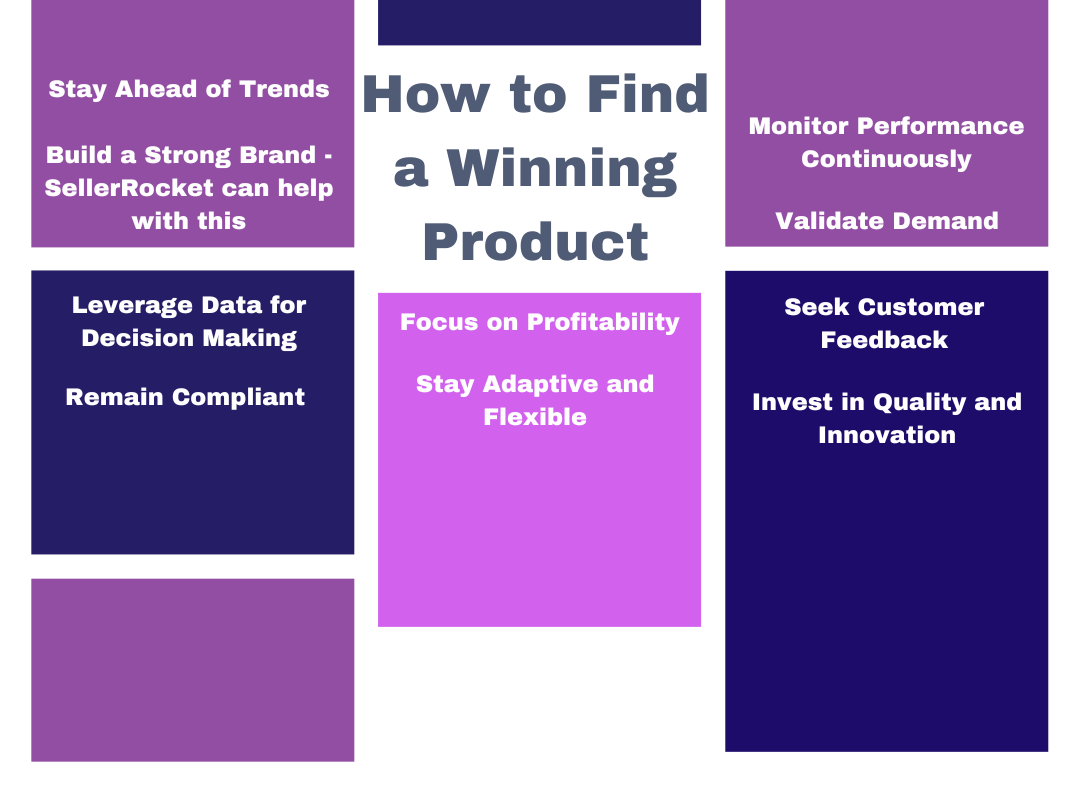
In the competitive landscape of ecommerce, finding a winning product is not just about luck, but a strategic blend of various elements. Let’s delve into ten key strategies that can guide you in identifying and launching a winning product.
Contents
Staying ahead of trends requires proactive market analysis and a keen eye on emerging patterns. It’s not just about following current trends but predicting future shifts in consumer behavior, technological advancements, and industry innovations. Conduct thorough market research, analyze industry reports, and stay updated with the latest news and developments. By anticipating trends before they become normalized, you can position your product to meet evolving customer needs and capture market opportunities ahead of competitors.
Building a strong brand goes beyond creating a logo or designing packaging—it’s about crafting a compelling narrative that resonates with your target audience. Define your brand identity, values, and mission statement to establish a unique positioning in the market. Develop a consistent brand voice, visual identity, and customer experience across all touchpoints. Invest in brand-building initiatives such as content marketing, influencer partnerships, and community engagement to create brand loyalty and differentiation.
In today’s data-driven era, harnessing the power of data is crucial for making informed business decisions. Utilize analytics tools to gather and analyze data related to market trends, customer behavior, competitor strategies, and sales performance. Extract actionable insights from data to optimize product development, pricing strategies, marketing campaigns, and operational efficiency. By leveraging data effectively, you can identify opportunities, mitigate risks, and drive strategic growth initiatives.
Flexibility and adaptability are essential qualities for navigating the dynamic business landscape. Be open to feedback from customers, employees, and industry experts. Embrace change as an opportunity for innovation and improvement. Stay agile in responding to market shifts, customer preferences, and competitive pressures. Flexibility allows you to change your strategies, adjust product offerings, and seize emerging opportunities while mitigating risks and challenges.
While growth is a common goal, profitability is the ultimate measure of business success. Focus on optimizing profitability by analyzing cost structures, pricing strategies, revenue streams, and profit margins. Conduct a thorough financial analysis to understand your break-even point, gross profit, net profit, and return on investment (ROI). Prioritize initiatives that drive sustainable profitability while maintaining quality, customer satisfaction, and long-term values.
Quality and innovation are key drivers of customer satisfaction and competitive advantage. Invest in product development processes prioritizing quality, functionality, durability, and experience. Embrace innovation to differentiate your products, introduce new features, and solve the recurrence of customer problems. Collaborate with research and development teams, suppliers, and industry experts to stay at the forefront of technological advancements and industry trends.
Customer feedback is a treasure of insights that can guide product improvements and strategic decisions. Actively solicit feedback through surveys, reviews, focus groups, and social media channels. Listen to customer suggestions, complaints, and preferences. Use feedback to identify areas for product enhancement, address issues, and align your product offerings with customer expectations. Incorporate customer feedback into product development cycles to continuously improve customer satisfaction and loyalty.
Before launching a new product, validate demand to ensure market viability and customer acceptance. Conduct market research, surveys, and pilot tests to gauge customer interest, willingness to pay, and demand forecast. Analyze competitor offerings, market trends, and consumer behavior to assess the potential success of your product in the market. Validate demand through pre-orders, campaigns, or limited-time promotions to minimize risk and optimize market fit.
Compliance with industry regulations, standards, and ethical practices is essential for building trust and credibility with customers, partners, and regulators. Stay informed about legal requirements, product safety standards, property rights, and data privacy regulations. Ensure your product meets all regulatory guidelines, certifications, and quality standards to mitigate legal risks, protect consumer rights, and uphold ethical business practices.
Launching a product is just the beginning of a journey that requires continuous monitoring and optimization. Track key performance indicators such as sales metrics, customer satisfaction scores, market share, and profitability.. Utilize analytics tools and dashboards to gain real-time insights into product performance, market trends, and competitive landscape. Continuously analyze data, identify performance, and implement corrective actions to drive growth, enhance customer experiences, and achieve business objectives.
© 2025 SellerRocket TM . All Rights Reserved.
Get our latest updates directly to your inbox.
Only the best in eCommerce and affiliate news, tips and tricks.
